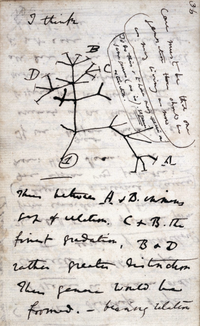
Photo from wikipedia
Developing highly efficient, low-cost, and durable oxygen evolution reaction (OER) electrocatalysts is extraordinarily desirable for achieving clean and sustainable hydrogen energy. Metal-organic frameworks (MOFs) are emerging as attractive candidates for… Click to show full abstract
Developing highly efficient, low-cost, and durable oxygen evolution reaction (OER) electrocatalysts is extraordinarily desirable for achieving clean and sustainable hydrogen energy. Metal-organic frameworks (MOFs) are emerging as attractive candidates for OER electrocatalysts. Herein, a two-dimensional Fe-Ni MOF of Fe(py)2Ni(CN)4 (py = pyridine) is synthesized controllably to generate various nanostructures, including nanoboxes, nanocubes, nanoplates, and nanosheets. Since different morphologies expose different active crystal planes and generate disparate intrinsic active sites, these nanostructures exhibit obviously different electrocatalytic activities. Particularly, the nanoboxes with a hollow structure display superior electrocatalytic activity and stability for OER due to greater active surface area and higher intrinsic activity of the exposed crystal planes, delivering a low overpotential of 285 mV at 10 mA cm-2 and a small Tafel value of 50.9 mV dec-1 in a 1.0 M KOH solution. The morphology-dependent electrocatalytic properties demonstrated in this work provide an efficient strategy to optimize MOF precatalysts for electrochemical energy storage and conversion.
Journal Title: Inorganic chemistry
Year Published: 2022
Link to full text (if available)
Share on Social Media: Sign Up to like & get
recommendations!